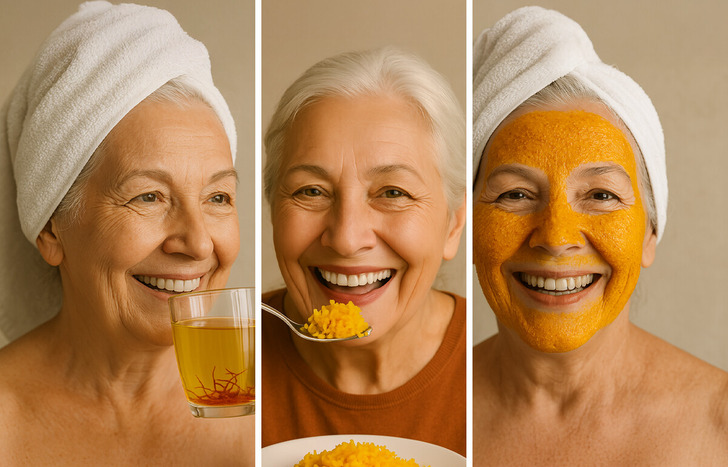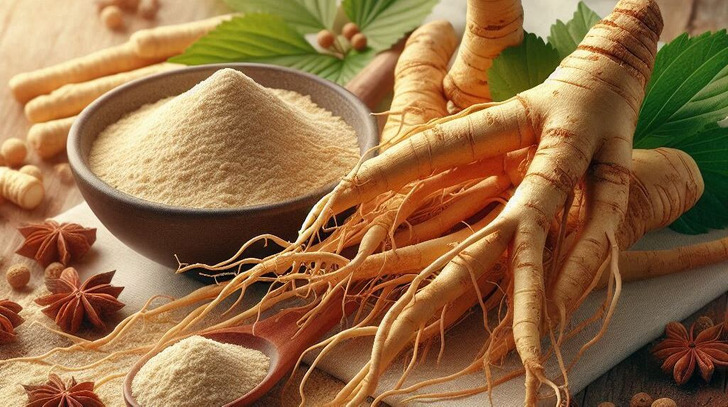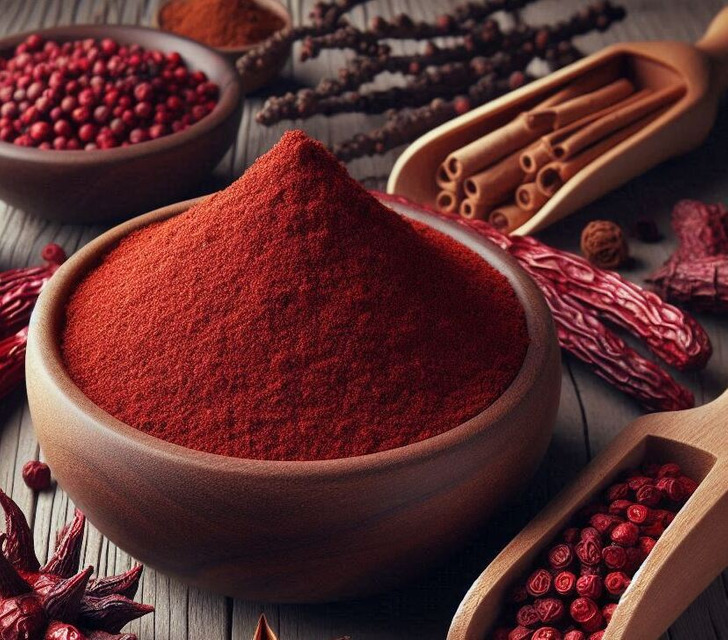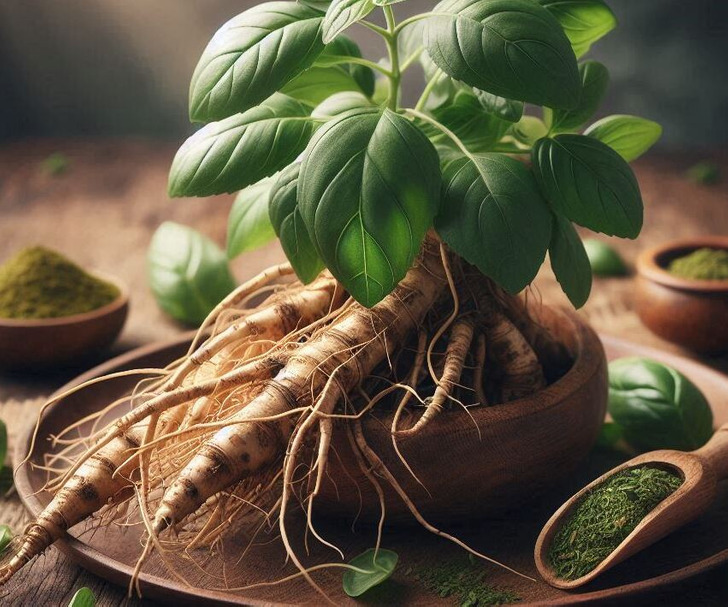Stylist Teaches Women 8 Fashion Rules Everyone Should Know By Now


The aging clock may be ticking, but spices might just be the pause to the timer. They’re not only good for seasoning, apparently they have great natural health benefits too, and incorporating them into your daily diet and skin routine may make you age backwards while revitalizing your energy and your health. Check out some of the spices below and their interesting benefits for your overall health and age.
CONTENT IS PROVIDED FOR INFORMATIONAL PURPOSES ONLY AND IS NOT INTENDED AS A SUBSTITUTE OF MEDICAL ADVICE. SEEK GUIDANCE OF YOUR DOCTOR REGARDING YOUR HEALTH AND MEDICAL CONDITIONS.
While inflammation contributes a great deal to aging, turmeric reduces inflammation — the antioxidants that it is full of, protects your skin cells from damage, making it an ideal anti-aging agent for your skin and a great product for good body function.
Turmeric can also improve joint and cardiovascular health, which are essential for aging with strength and grace.
Check if you are allergic to turmeric before use, as the spice can have some unpleasant side effects. Reactions include abdominal pain, hives or rash.
How to use:
Food — Add it to eggs, vegetables, curries or stews for great flavor and color.
Drink — You can blend it into smoothies or make golden milk — a bright yellow drink, traditionally made by warming up cow’s or plant-based milk with turmeric and other spices, such as cinnamon and ginger — it also tastes great!
Skin — For that natural glow, you can create a simple turmeric face mask by mixing Greek yogurt, honey, and turmeric. Apply the mixture to your face, leave it on for 15 minutes, then rinse off with water.
In the maintenance of youthful skin and health, ginger is an important spice. It has natural chemicals that help keep your immune system strong, and it helps your body deal with inflammation in a healthy way.
Ginger is an ideal brain spice because it helps protect and improve your brain function while lowering the risk of diseases like Alzheimer’s, Parkinson’s, and multiple sclerosis. It may also aid in weight loss, arthritis management and menstrual symptom relief.
Pregnancy — ginger has the well-known ability to alleviate “morning sickness” and other pregnancy-related nausea, so much so that it is listed as a legitimate nonpharmaceutical treatment for nausea and vomiting by the American Academy of Obstetrics and Gynecology.
Although ginger is safe in normal food amounts, the side effects of high doses (like in supplements) may cause blood to thin and blood sugar to be affected. If you are on medication or have diabetes, consult your doctor and dietitian before you think of using it.
How to use:
Drink — For some good old ginger tea, perfect for those cold days, add lemon, lime or a bit of honey and enjoy.
Food — Ginger’s flavor is perfect for savory foods like lentils, and it goes tasty with sweet fruits. You could also add it to sushi.
Body — Ginger Foot Soak: To enhance circulation, reduce tension, and alleviate cold symptoms, boil ginger slices in water and soak your feet.
Not only is it delectable, cinnamon also reduces blood pressure, improves cholesterol, and other major heart disease risk factors. It has also been proven that cinnamon greatly increases sensitivity to the insulin hormone, which could lead to better blood sugar regulation, and therefore better managed diabetes (a symptom being dark patches on skin folds), and better skin elasticity, which means it is important in preventing premature aging by revitalizing skin.

How to use:
Food — It’s delicious in savory dishes or sweet desserts, and you can add it to toast, stews, sweet potatoes, sauces, marinades, yogurt, and coffee, for amazing flavor. Instead of sugar, you can add cinnamon to oatmeal’s too.
Drink — Cinnamon is a natural sweetener for hot drinks, so you can add it to hot chocolate, tea or coffee and hot apple cider. You can also make cinnamon water or cinnamon tea.

It might be the most expensive spice in the world, but saffron also has the potential to become your skin’s best friend. It protects against UV radiation — which is vital because UV exposure harms your skin cells and speeds up skin aging. Saffron also reduces hyperpigmentation caused by scarring, sun exposure, or hormonal changes.
Other health benefits that it has been linked to: reducing PMS symptoms, keeping your heart and blood vessels healthy, lowering blood sugar, improving eyesight in adults with age-related macular degeneration (AMD) and improving memory in adults with Alzheimer’s disease — but further research is required for full confirmation on the matter.

How to use:
Food — Add tiny amounts of saffron to savory foods like paella, risotto, and other rice dishes to complement your food well.
Drinks — To bring out the mild flavor of saffron, place threads in hot — but not boiling — water. Infuse it in warm milk or water to make some beauty tonics.
Skin — Saffron is the perfect 3-in-1 for your skin because it can be used to soothe, cool, and moisturize your skin. You can make it into a face mask: Crush 3 saffron strands and mix with 1 tablespoon of honey. Put it on your face, wait 10 minutes, then rinse; a cooling gel: Crush 4–5 strands of saffron and mix with 2 tablespoons each of aloe vera gel and rose water. Rub a small amount onto your face until it soaks in;
a face toner: Add 3–4 saffron strands to ½ cup of rose water in a spray bottle. Let it sit for a day or two, then spray or dab it on your skin; or a moisturizing oil: Fill a small bottle with a base oil like almond or grape seed, then add 3–5 drops of saffron essential oil and apply a bit to your skin.
Rosemary’s antibacterial and anti-acne qualities has been shown to be beneficial in tightening loose and sagging skin on the face, arms and legs. It also stimulates faster healing on the skin, so it’s beneficial for decreasing stretch marks and making your hair healthy. On top of that, according to studies, rosemary benefits the mind by improving memory and attention.
Essential oils are highly concentrated and should be diluted with a carrier oil, such as coconut or almond oil, before use on skin. They aren’t meant to be swallowed.
How to use:
Drink — For succulent rosemary tea — let the herb sit in hot water.
Skin — You can use rosemary essential oil by breathing it in (aromatherapy) or putting it on your skin — for safe application.
The most used spice in the world could just benefit your bone health. Nicknamed the king of spices, black pepper contains manganese, a mineral that plays a big part in healing your wounds and improving your metabolism. Black pepper can also help you avoid sickness by strengthening your immune system.
How to use:
Food — A dash of ground black pepper into vegetables, pasta, meat, and other meals, is almost a certainty for a delicious meal. It also works well with other ingredients like turmeric, cardamom, cumin, garlic, and lemon zest. You can also coat proteins, such as fish, with some coarsely ground black pepper and include other spices too.

Ginseng is great for your skin because it helps make collagen, which keeps your skin firm and smooth, reducing wrinkles and fine lines. It also makes your skin glow by boosting blood flow, which brings more oxygen and nutrients to your skin — making it look healthier and more even-toned.
It improves stamina, focus, and immune response and it’s antioxidant properties helps protect against cells that cause speedy aging or bad health.

Sumac’s rich antioxidants help protect your cells from damage and lowers the risk of diseases like heart problems, cancer, and brain disorders. Sumac’s anti-inflammatory effects can help lessen the risk of heart disease by lowering inflammation in the blood vessels, and it also supports healthy blood sugar levels and could be a useful part of a balanced diet.
Sumac helps manage weight because it’s high in fiber and has metabolism-boosting properties. It’s good for your skin because it helps fight damage and swelling in your skin, and it can protect against aging, calm things like acne or eczema, and even help wounds heal faster.
How to use:
Food — Garnish dishes that would benefit from the addition of paprika and add it into marinades, rubs, as well as spice blends so that your roasted and grilled meats can look and taste appetizing. Sprinkle sumac onto hummus, creamy dips, salads, side dishes, and fish, for some good seasoning.

Tulsi is high in vitamin A and other anti-aging compounds. This makes it beneficial for reducing sun-damaged skin, promoting collagen formation, and enhancing skin hydration levels. It’s also known to prevent acne, foster healthy skin aging, and lower pigmentation while bringing relief from eczema, preventing hair loss and dandruff.
How to use:
Skin: Tulsi can be used in facial steams, face masks, hair masks, cleansers, and spot treatments.
Drink: Tulsi tea or supplements to improve overall skin and body health.
Not to be confused with garlic, cloves are a spice made from the flower buds of a clove tree. The antibacterial quality of cloves can benefit your oral health when combined with good oral hygiene such as brushing. Some studies also suggest that cloves can protect against cancer, regulate blood sugar, reduce stomach ulcers and improve bone mass due to its manganese property.
Caution: Clove oil can be toxic in large doses, and overdosing on clove oil may cause liver damage—especially in children. More research is needed to understand the effects of smaller amounts in humans.
How to use:
Food — Clove spice can be mixed with cinnamon and nutmeg and then added to sweet cuisine. They also add a special flavor to desserts, curries, chutneys, or rice and meat.
Drink — Clove tea can be made by simmering whole cloves in boiling water for 5–10 minutes.
Resetting the biological clock is all about improving one’s quality of life and having a sense of control over it, and that requires you to put in the work. Learn the warning signs of a bad thyroid here.











